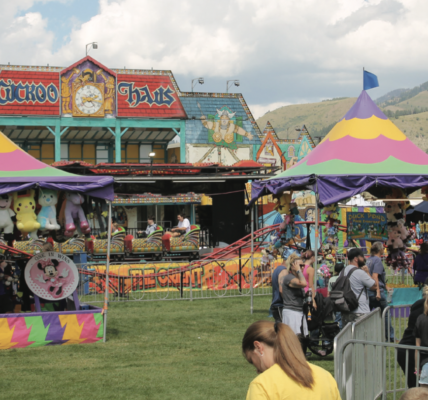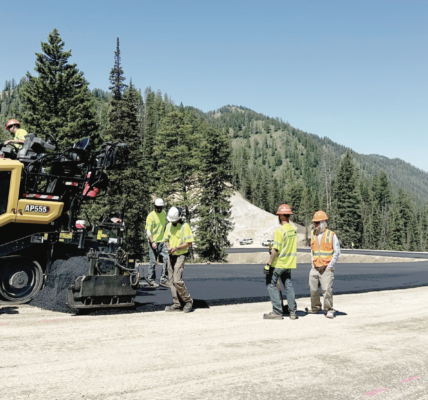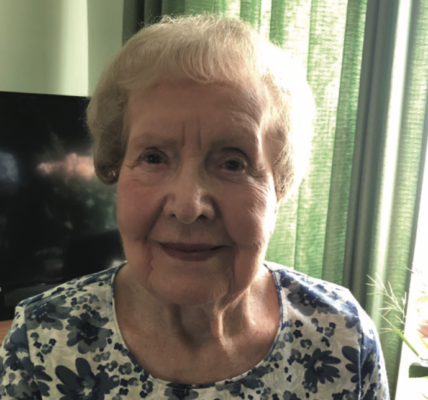
• New hospital survey results come as 11 of Wyoming’s 23 counties do not have a practicing OB-GYN and three delivery facilities have closed in the last decade. Lawmakers begin to look for solutions.
By Katie Klingsporn, WyoFile.com
Hiring and retaining properly trained nurses, obstetricians and other medical staff is the biggest challenge hospitals face as they struggle to fill Wyoming’s maternity care gaps, a new survey presented Monday to lawmakers shows.
The result is not surprising given that 11 of Wyoming’s 23 counties lack a practicing OB-GYN physician and three delivery facilities have closed since 2018. In Fremont County, where access to maternity care has declined significantly in that time, average monthly births at Lander’s SageWest Hospital have dropped from around 35 to under 20, according to the Wyoming Health Department.
But as families increasingly travel out of county and out of state to deliver babies — which poses risks to mothers and infants and often comes with bigger costs — solutions remain elusive. Complicating the issue are challenges like low birth volume in rural areas, high costs of medical malpractice insurance, abortion legislation’s impacts on doctors and barriers for midwives to deliver.
The survey — which was issued following a WyoFile investigation into Wyoming’s maternity care deserts — was presented Monday as lawmakers began to pick through the threads of the state’s maternity care shortage. It’s the committee’s No. 1 priority for the interim, or legislative off-season, along with childcare.
“It’s a pretty simple problem with a very complex solution,” Wyoming Hospital Association President Eric Boley told the Legislature’s Labor, Health and Social Services Committee.
The survey
The OB subcommittee of Gov. Mark Gordon’s Health Task Force created the survey and sent it to hospitals earlier this year to better gauge the scope of the problem. “We heard a lot of things anecdotally,” said Jen Davis, Gov. Mark Gordon’s health and human services policy director, but “we just really wanted to get some more information to really understand the landscape better.”
Fourteen of Wyoming’s 18 birthing hospitals responded, in addition to a standalone birthing center. They included large facilities like Banner Wyoming Medical Center in Casper, small ones like Niobrara County Hospital District and Earthside Birth and Wellness Center in Cheyenne.
Some 67% of respondents offer labor and delivery services, but a large majority, 80%, do not perform high-risk deliveries. “Those are sent out of state typically,” Davis said, or sometimes to Wyoming’s larger facilities.
OB-GYN physicians make up a little more than 50% of staff who perform labor and delivery services. Family medicine doctors are next, then midwives.
The majority of respondents listed the “inability to employ trained, skilled nurses” as the No. 1 obstacle to maternity care services, followed by inability to hire obstetricians. Affordability was the third biggest challenge — delivering babies is not profitable for hospitals like elective surgeries, like knee replacements — are.
“We invest a lot of money into this service line,” one comment read. “The payor mix is poor so the care is given away in a lot of cases. I can see why hospitals like Rawlins and Kemmerer got out of the business. It isn’t sustainable for a small hospital long-term.”
Another challenge that many respondents cited was the low birth volume of a rural facility, which doesn’t give providers the kind of consistent experience medical professionals seek to become highly competent, and creates onerous on-call schedules.
“We do too many deliveries for independent OBs to take 24/7 call, but too few to hire a full OB hospitalist program as is being done in other markets,” one respondent commented.
Nearly 50% of respondents expressed interest in regionalizing labor and delivery services, while 40% said they may be interested. Only 13% are disinterested in exploring regionalization, according to the survey.
The challenges
So why is hiring so hard? Answers include lower pay and fewer resources at rural facilities compared to urban competitors, high costs of living in some places, hospital management problems, nurses opting for higher-paid traveling gigs rather than permanent positions, a cohort of doctors retiring simultaneously and many others.
“It’s a conundrum,” said Rep. Sarah Penn (R-Lander), who works as a nurse practitioner in Fremont County.
But what can the state do about it? As they began wading into the issue, committee members and others floated ideas that included incentivizing midwives and doulas, looking into increasing Medicaid payment rates, helping distressed hospitals, leaning more on family physicians to deliver along with OB-GYNs, utilizing mobile health units, alleviating medical malpractice insurance premiums, bolstering residency programs, increasing regional cooperation and creating a midwifery track at the University of Wyoming or community colleges.
Rep. Jeannette Ward, (R-Casper) who is a retired doula, wants to make it easier for midwives — both nurse midwives who deliver at hospitals and certified professional midwives who help with home births — to work in the state. Part of that, she said, is improving the relationship between obstetricians and CPMs.
“What I’d like to see is increased freedom, that there’s more freedom to the providers,” she said. “I have a feeling that this situation would improve if [midwives] were able to have access to hospitals, to OBs who didn’t refuse to work with them.”
Davis said that’s part of the conversation — and a first step is to better nail down the barriers regarding facility rules, provider obligations and other nuances. The initial survey, she thinks, “is just the beginning of things we want to know.”
Another issue that came up is whether Wyoming’s abortion bans, which are currently tied up in litigation, have had a chilling effect on prospective doctors’ willingness to consider working here.
Rep. Mike Yin (D-Jackson) brought up an opinion piece written by an OB-GYN who grew up in Wyoming and wanted to practice here, but ultimately decided against it after lawmakers passed the abortion bans.
“Have you heard concerns from other doctors and … have hospitals heard concerns when trying to recruit that that penalty and those laws are hurting recruitment?” Yin asked Sheila Bush, executive director of the Wyoming Medical Society, which advocates for the state’s physicians.
“Yes, overwhelmingly,” Bush said. “The laws that have been passed recently create a lot of confusion, and they undermine any sort of predictability and insert the legal system in a really strange way in the medical practice.”
Boley of the Wyoming Hospital Association confirmed that. “When [job candidates] find out where we are right now, they are concerned, and we are not able to recruit,” he said. “They want to go other places because there is ambiguity and there is concern with existing law.”
Rep. Ward, who cosponsored the bill that created a near-complete abortion ban in Wyoming, asked Bush if she was suggesting that the state should “kill more babies in so that we can have more people to deliver babies in Wyoming?”
“Of course that’s not my suggestion,” Bush said.
Future implications
Declining access to maternity care is not isolated to Wyoming. Over the past decade, more than 200 rural hospitals across the country have stopped delivering babies.
And while Wyoming is comparable to the rest of the country when it comes to providers per capita, “I think the main problem here that we want to point out is that there are huge disparities both across counties and within certain counties,” Franz Fuchs of the health department told the committee.
Sen. Anthony Bouchard (R. Cheyenne) wondered if state government is even able to meaningfully address the issue, given what appears to be an exodus of doctors that began years ago.
That’s a question worth considering, said committee co-chair Rep. Dan Zwonitzer (R-Cheyenne).
“Can we solve this problem, in the least populated state?” he asked. “We can keep trying.”
Davis stressed that the issue has bearing on the future health of Wyoming.
“It’s really important, and we know if we don’t have care where people can have babies, we’re not going to be keeping our young people in the state or bringing young people into the state,” she said.
The committee will return to the issue at its next meeting, which will take place in Pinedale in June.
WyoFile is an independent nonprofit news organization focused on Wyoming people, places and policy.






